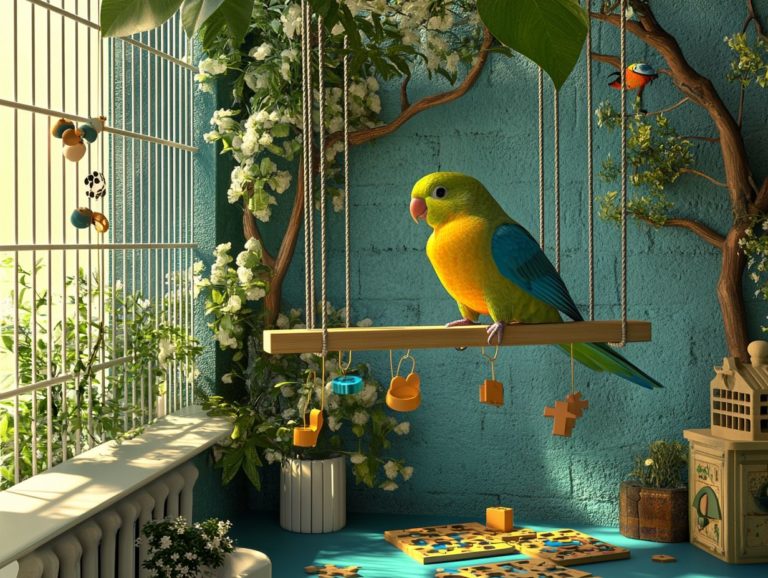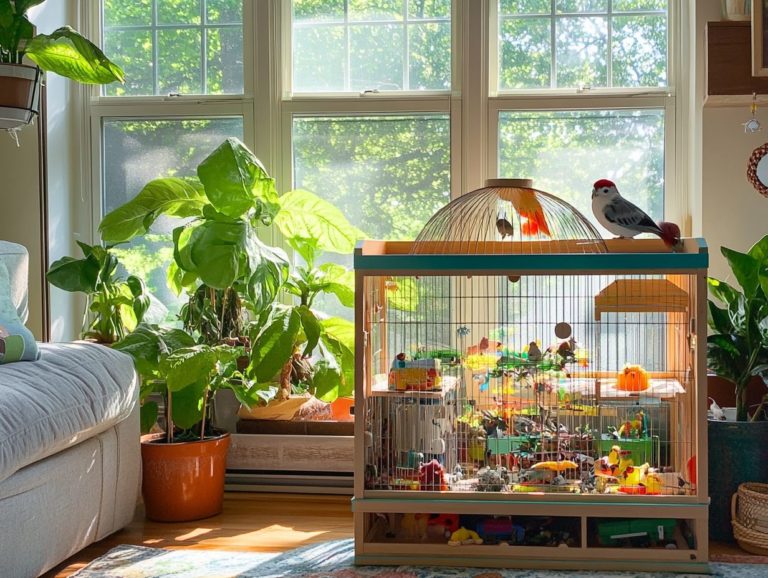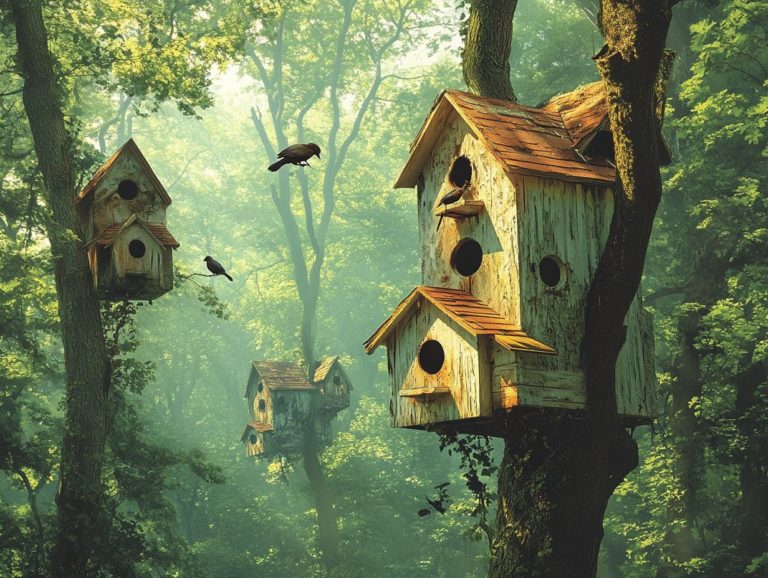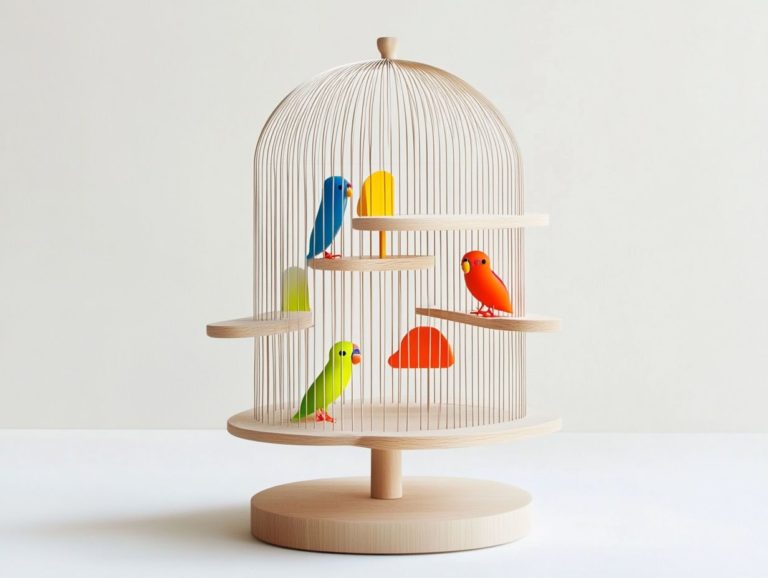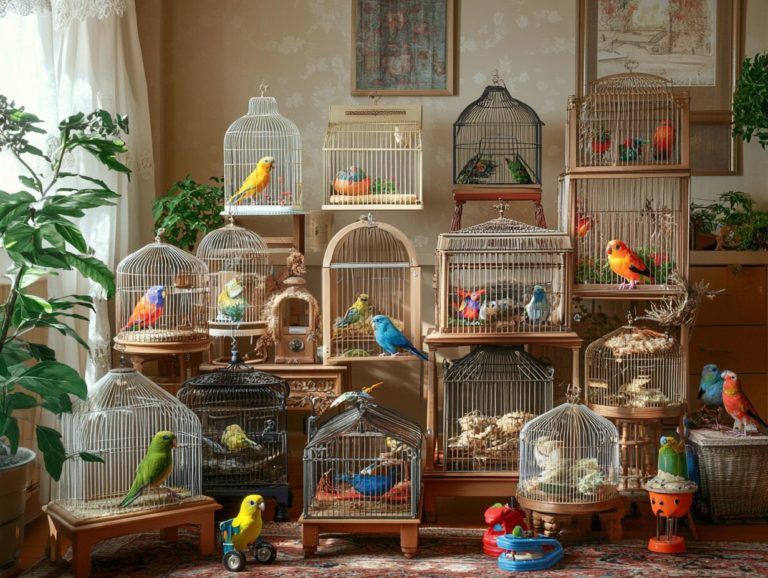How to Provide a Stimulating Environment
A stimulating environment is crucial for fostering growth and well-being at every stage of life.
From infancy to childhood, the right surroundings nurture curiosity, creativity, and learning. This article explores essential elements that create an engaging environment, shares interactive activities to ignite interest, and emphasizes the significance of incorporating sensory experiences!
It also outlines strategies for adapting spaces to accommodate different ages and abilities, ensuring everyone can flourish in a rich, stimulating atmosphere.
Discover how to enhance your environment for optimal growth and enjoyment!
Contents
- Key Takeaways:
- The Importance of a Stimulating Environment
- Creating a Stimulating Environment
- Activities to Promote Stimulation
- Incorporating Sensory Stimulation
- Adapting the Environment for Different Ages and Abilities
- Frequently Asked Questions
- What is a stimulating environment and why is it important?
- What are some characteristics of a stimulating environment?
- How can I create a stimulating environment at home?
- What are some benefits of a stimulating environment for children?
- How can I modify a stimulating environment for individuals with special needs?
- How can I assess the effectiveness of a stimulating environment?
Key Takeaways:
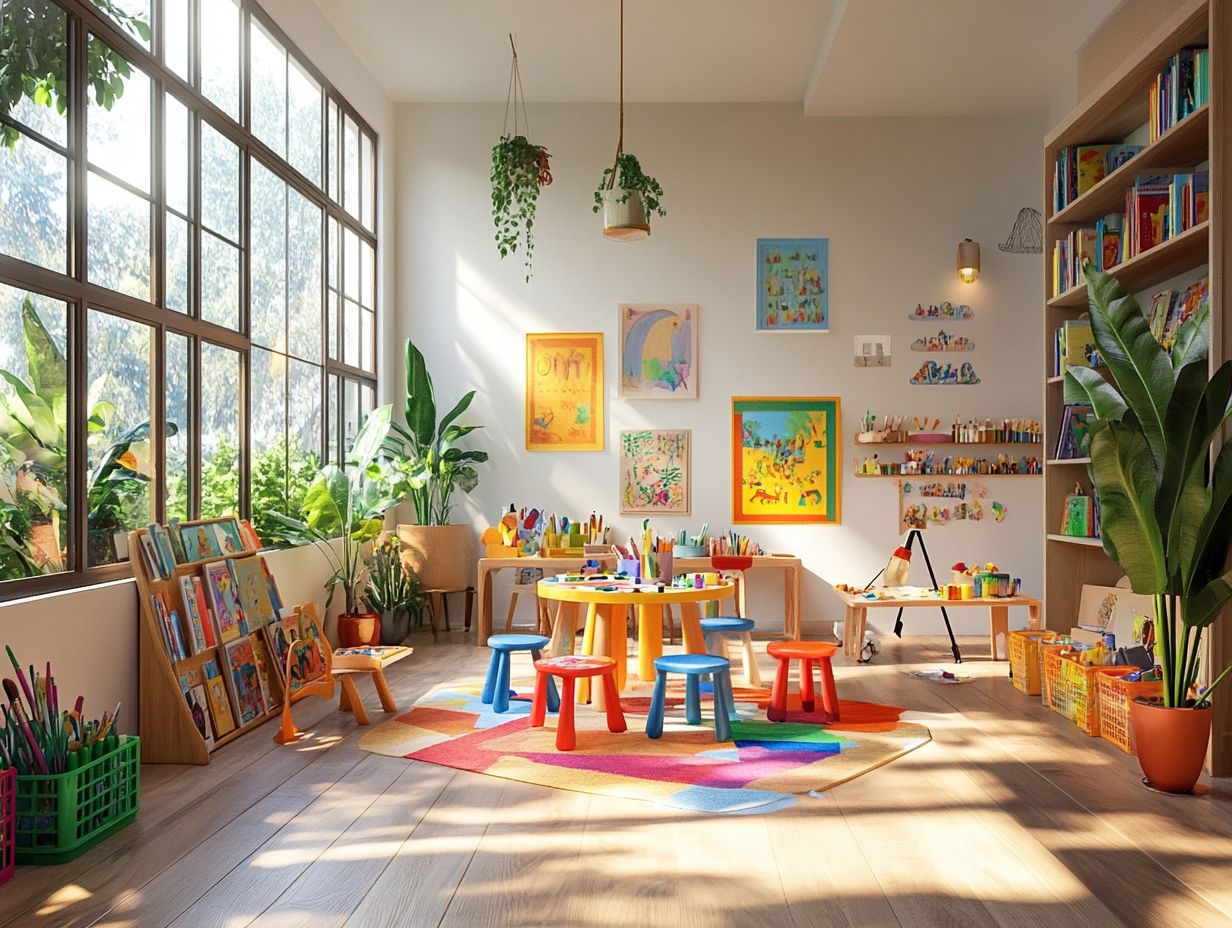
- A stimulating environment is crucial for development and well-being.
- To create a stimulating environment, include elements like colors, textures, and interactive activities.
- Sensory stimulation enhances the environment through activities involving different senses.
The Importance of a Stimulating Environment
A stimulating learning environment is essential for your child’s development. It fosters personal growth and encourages meaningful interactions among preschoolers and toddlers. Educational research indicates that these environments enhance emotional skills, offer responsive teaching, and promote overall well-being.
Features such as natural light, flexible layouts, and interactive displays play a significant role in crafting a nurturing space that ignites curiosity and inspires exploration.
Why It Matters for Development and Well-being
Understanding the importance of a stimulating environment can profoundly shape your approach to parenting and education. A rich learning atmosphere ignites curiosity and creativity, nurturing emotional resilience and social skills in children.
Research shows that when children are exposed to diverse stimuli like interactive play and various learning materials they often exhibit enhanced cognitive flexibility and stronger interpersonal relationships.
For instance, studies by educational psychologists reveal that involving children in collaborative projects significantly boosts their communication skills and empathy.
You can adopt strategies such as creating designated learning spaces at home or integrating varied outdoor experiences to promote diverse learning. By fostering such environments, you contribute to holistic personal growth, equipping your children with essential life skills.
Creating a Stimulating Environment
Crafting a stimulating learning environment encompasses several essential elements that elevate classroom design and foster child-friendly spaces. Prioritizing these aspects encourages open-ended play and sensory exploration, creating an atmosphere where curiosity thrives and learning flourishes.
Key Elements to Include

Key elements to include in a stimulating environment emphasize the importance of crafting an engaging atmosphere through thoughtful classroom layout, sensory input, and the art of vibrant color psychology.
By incorporating tactile experiences like textured panels or inviting soft seating options you can encourage children to explore through touch, igniting their natural curiosity. Interactive displays, such as hands-on science experiments or creative art stations, promote critical thinking and foster social interaction among peers.
Strategically utilizing color can evoke emotional responses, transforming certain areas into inviting or energizing spaces. Together, these components work in harmony to create a nurturing environment where young learners can thrive, experiment, and engage with the world around them.
Activities to Promote Stimulation
Engaging activities that promote stimulation are essential for fostering active learning. They enable children to explore their environment through hands-on experiences and imaginative play.
By immersing them in such activities, you cultivate their curiosity and creativity, paving the way for a richer understanding of the world around them.
Ideas for Engaging and Interactive Activities
Focus on ideas for engaging and interactive activities that nurture child-led play, spark creative thinking, and offer ample opportunities for exploration.
Incorporating these activities into your daily routine can be both rewarding and seamless. Transform everyday moments during playtime, mealtime, or even nature walks into enriching experiences. For instance, when you’re prepping in the kitchen, try weaving in open-ended questions. This not only allows children to share their thoughts but also teaches them about measurements and ingredients in a fun way.
Adapting to children’s needs is essential in these scenarios. Observe children’s interests closely and adapt activities accordingly. Whether it’s extending a nature scavenger hunt ignited by a child’s curiosity or enhancing a simple art project with new materials, this supportive environment fosters confidence and creativity. It encourages children to delve deeper into their exploration of the world around them.
Incorporating Sensory Stimulation
Incorporating sensory stimulation into a child’s learning environment is crucial for enriching sensory exploration. By providing diverse sensory input, you create an engaging atmosphere that fosters curiosity and creativity.
Establishing safe areas for play and discovery allows children to learn through experience, enabling them to explore their surroundings with confidence.
Using Different Senses to Enhance the Environment
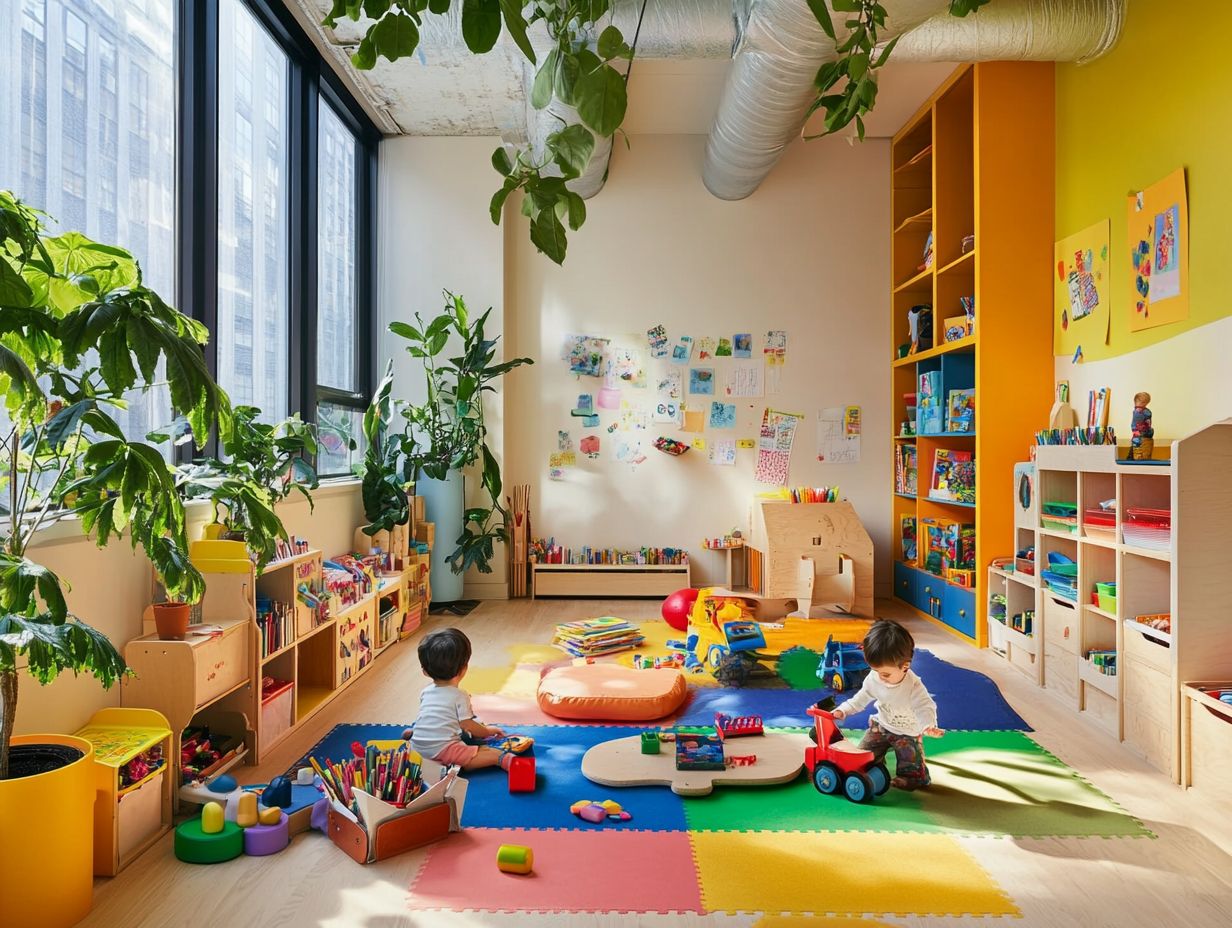
Using a variety of senses to enrich the learning environment can profoundly influence emotional skills and foster imaginative play among young learners.
For example, incorporating soft textures such as plush rugs or tactile boards invites children to engage their sense of touch. This ignites their creativity as they experiment with different materials. Visual stimuli, like vibrant artwork or interactive displays, capture attention and inspire exciting storytelling.
Sound elements, such as gentle music or soothing nature sounds, establish a calming atmosphere that encourages focus and collaboration. Both are crucial for social development. These multi-sensory experiences not only captivate young minds but also support their overall growth, aiding in the development of vital emotional and cognitive skills while making learning an enjoyable adventure.
Adapting the Environment for Different Ages and Abilities
Adapting the learning environment to accommodate various ages and abilities is essential for ensuring that every child can participate in activities suited to their growth stage.
This thoughtful approach sparks interest and excitement, helping each child thrive in their educational journey.
Strategies for Infants, Toddlers, and Older Children
Creating nurturing environments for infants, toddlers, and older children demands a thoughtful approach that considers their developmental stages and the importance of safe play.
By understanding the unique needs of each age group, you can design spaces that encourage exploration while ensuring protection. For infants, this means providing soft play mats and securely placed toys that stimulate their sensory experiences.
Toddlers thrive with low shelves that promote independence, allowing them to reach for items that foster autonomy in their play.
As children grow older, it’s essential to incorporate areas designed for group activities and quiet reflection. This cultivates vital social skills and nurtures their emotional development. Each of these carefully crafted environments prioritizes physical safety while encouraging meaningful interactions that enrich their learning experiences, ultimately promoting their healthy growth.
Frequently Asked Questions
Have you ever noticed how children explore their surroundings? Try incorporating these ideas today and watch your child thrive!
What is a stimulating environment and why is it important?
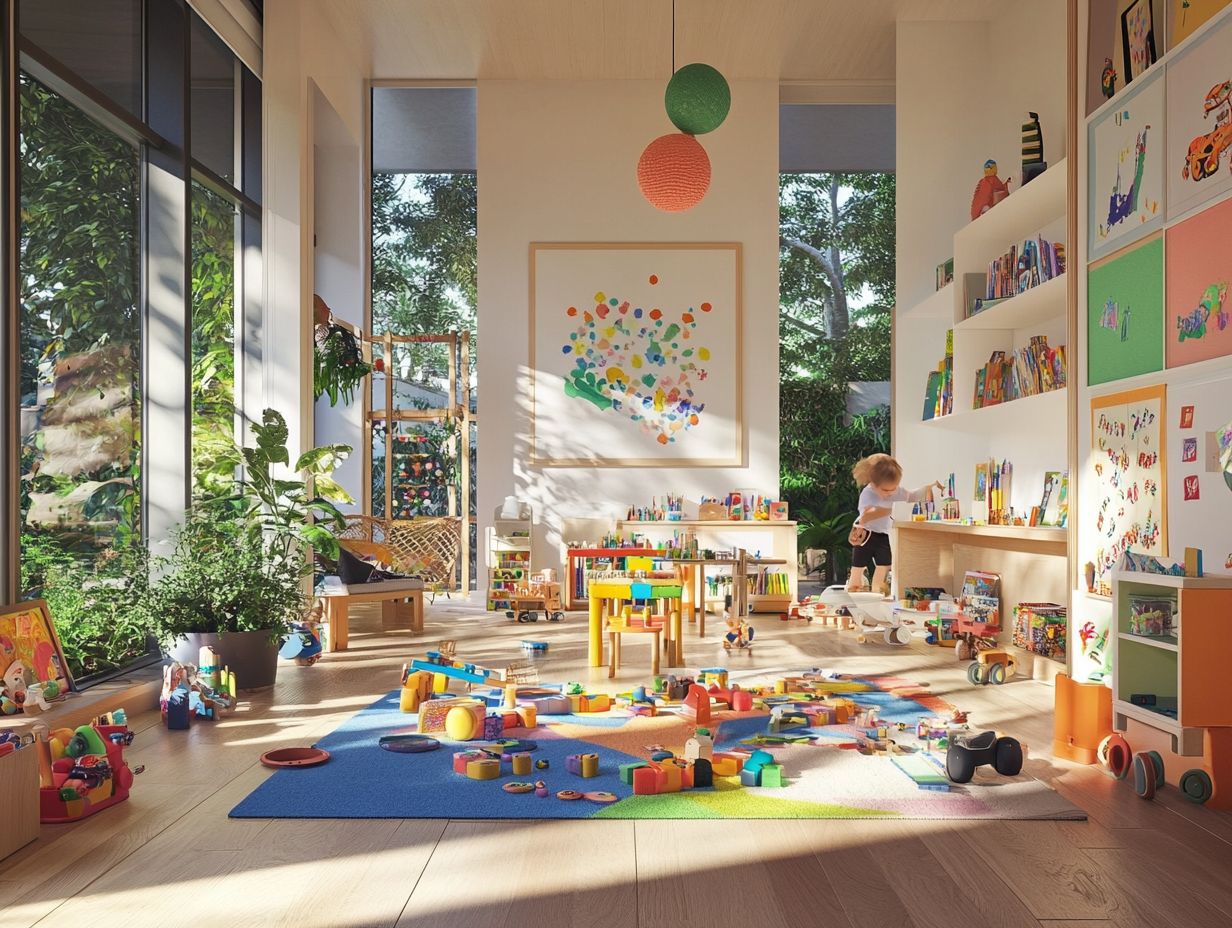
A stimulating environment is a space filled with engaging activities and age-appropriate materials. It promotes curiosity, imagination, and essential development in cognitive, physical, and social-emotional areas.
What are some characteristics of a stimulating environment?
A stimulating environment is organized and visually appealing. It offers a mix of flexible and guided activities with a variety of materials suitable for different ages and interests.
How can I create a stimulating environment at home?
Designate a special area for play and learning at home. Involve your child in setting up and organizing the space, and keep things fresh by rotating toys and activities.
What are some benefits of a stimulating environment for children?
A stimulating environment sparks creativity and independence. It helps children develop motor, language, and social skills while fostering a love for exploration and personal growth.
How can I modify a stimulating environment for individuals with special needs?
To support individuals with special needs, provide sensory materials, use assistive technology, and adapt activities to their abilities. Consult with professionals to ensure the space is inclusive and accessible.
How can I assess the effectiveness of a stimulating environment?
Observe how individuals engage with the space and gather feedback from them and their caregivers. Regularly review and adjust the environment based on their evolving needs and interests.

